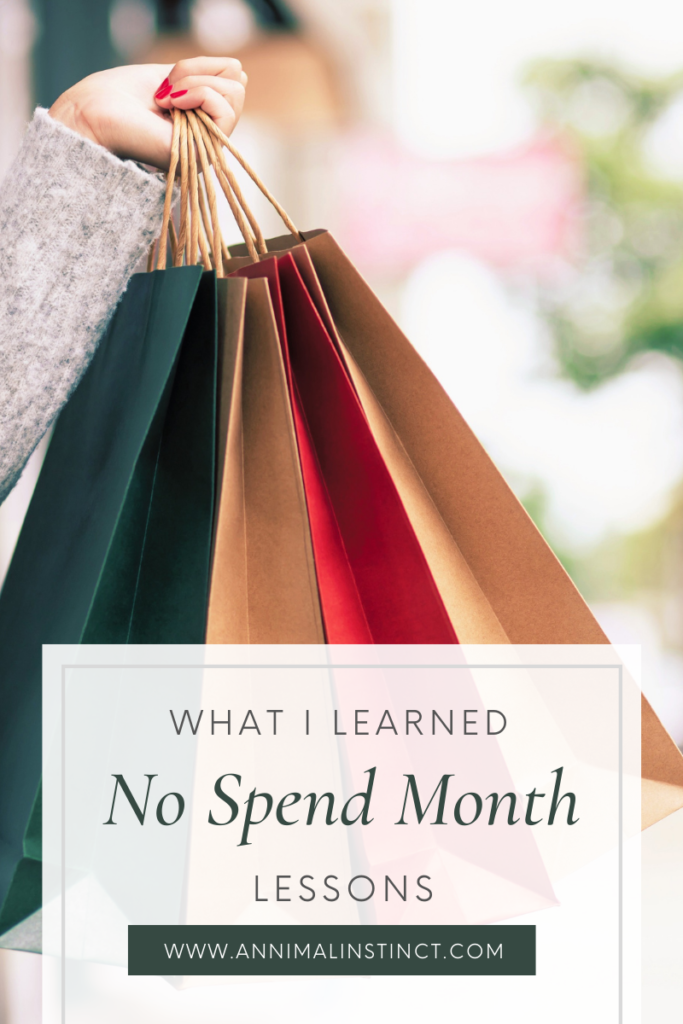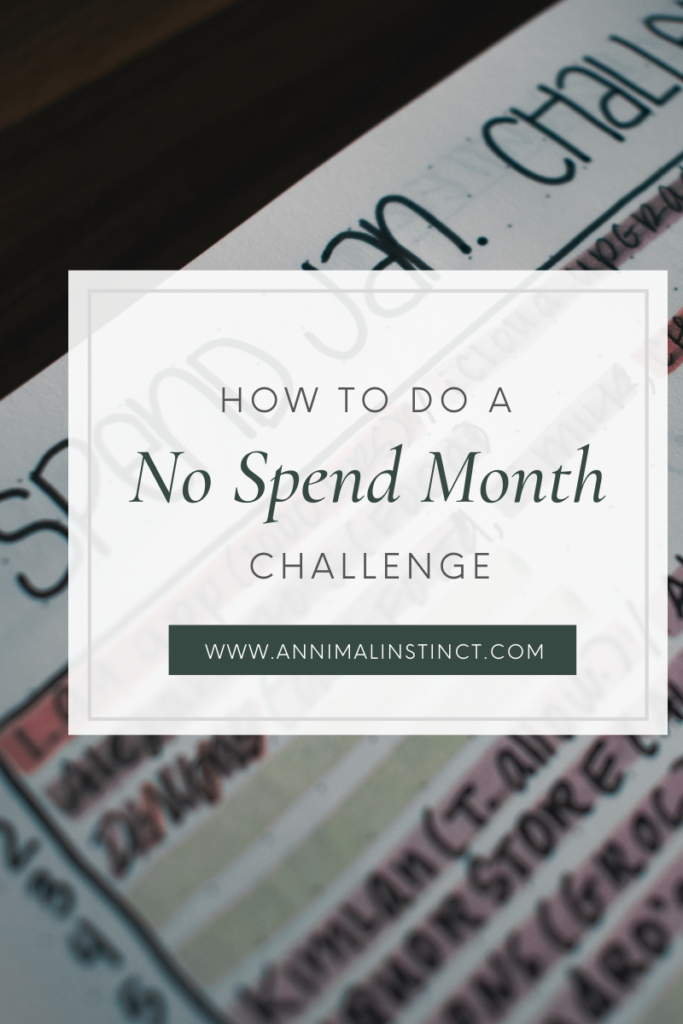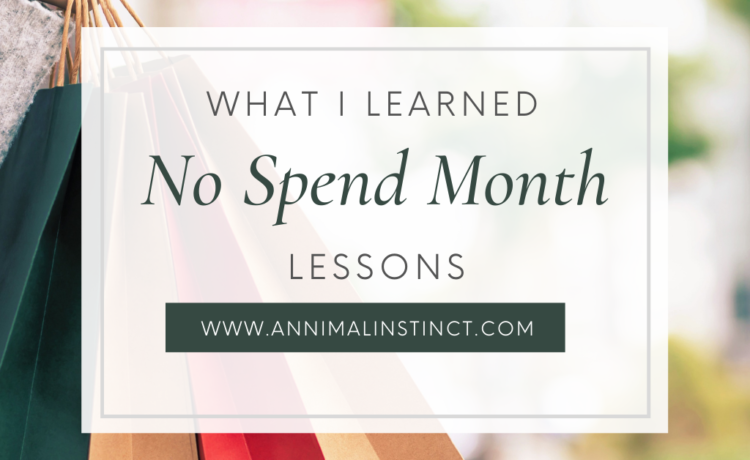
Spending less money is only one of the benefits of a no spend month. During January, I committed to a no spend month and was astonished by the results.
I wanted to share the results of my no spend January for anyone considering a spending fast of your own.
Several years ago, I transformed the way I consumed goods and spent money. I used to shop for stress relief and politely ignore the state of my bank and savings accounts. It took a lot of work to undo entrenched habits and learn new values and behavior, but I have only experienced positive results spending less, and spending more consciously. I embraced a minimalistic approach to consumption and now maintain healthy financial habits.
I keep a close eye on spending, partly for the obvious reasons ($), and partly because spending is a symptom of deeper behavior and values. Usually, I have a relatively easy time realigning my behavior if something is out of step. But, after being significantly over budget three months in a row, I wanted to do a no spend challenge in order to provide more clarity about my habits. It was time to take a close look at my spending behavior and realign my behavior with my goals.

No Spend Bullet Journal Layout
For this no spend challenge, I created a simple no spend challenge layout in my bullet journal and updated it every day or two, while transactions were fresh in my mind. Although I do most of my financial planning on the computer, I am the most mindful when I physically record and track important projects. I also really enjoy getting out my fancy highlighters, so there is a built-in reward for each day’s effort.

No Spend Month Rules
There are many approaches to a “no spend” month, but my no spend month rules are flexible. For this month, my goal was not to spend *nothing* but to be really conscious, critical, and curious. These are the guidelines I set for myself:
- Budgeted items are “OK” – especially essentials like food, gas, and anything our child needs
- Even if an item or category is budgeted, ask “Do I really need this?” and consider alternatives before buying, with a mandatory 24-hour cooling off period for items in an online cart.
- If I am going to buy it anyway, I can buy it now IF I need to. For this particular no spend challenge, I saw no point postponing an inevitable expense. If you’re not trying to meet some minimum threshold (due to hardship, perhaps), it can easily become a game to push an expense into the next month.
- Any non-budgeted expenses must be recorded by dollar amount to hold myself accountable.
No Spend Challenge Results
Overall. I spent $59 in unapproved funds on an iPhone app, a monthly subscription to Sundance, landscape lights, chips, and went $20 over budget on beer/alcohol. I feel fine about all of these things. The app and subscription were rarities. We could have done without the subscription but wanted to finish watching a television show we enjoyed. The lights were something I was going to purchase anyway, and I wanted free shipping for something I needed. We ended up under budget on groceries for the first time in ages, and so I would not “count” the chips, really, but it was an extra trip to the store for junk food. We did go over budget on alcohol. I found it interesting how inefficient our trips to the liquor store are, but I don’t know that buying in bulk to reduce shopping trips would really work out to be a savings. More likely, we would just drink more and therefore spend more. I thought it was interesting to notice that we rarely make any purchases at the beginning of the week. Our spending picks up toward the weekend as we buy groceries, takeout, beer, and gas. I also earned $101 selling things online to end up with a net result of +$42, so from a spending perspective, I view January as a success.
Spending. Our monthly spending was down 60%. Once you get in the habit of simply not buying things, it becomes easier. This includes everything – mortgage, bills, and all the rest.
Saving: We saved about 50% more. That amount varies a bit, but comparing to similar months we deposited between 50-500% more than average into savings. When you include retirement accounts, we saved closer to 500% more than an average month during 2021 in January 2022.
Time: I saved 2-3 hours of time. It took less time each week to update our budget and review activity with fewer transactions. I also spent less time opening packages and dealing with the contents.
Waste: We generated less waste. Most of our shopping is done online these days, so less buying means less packaging. We typically do not have much food waste (reducing food waste was a major focus of mine for several years), but we had even less this month by paying close attention to the contents of the fridge and pantry.
Stress: I experienced less stress. Our monthly income has declined by approximately 10% since last year (the travails of being self-employed!) but it seems like the cost of everything is higher now. Spending less helps me to stress less. We drive older vehicles, have a child, and have two elderly dogs, so there are often large, unexpected expenses and being frugal during most of the year helps us weather those financial storms a little better.
In short, I spent less, saved more, had more time, and less stress. My house is slightly less cluttered, and I feel good about making progress toward our financial goals. All that was the result of just a single month’s focus on not spending as much money.
Have you ever tried a no spend month? Would you? I would love to know. Leave me a comment below!
